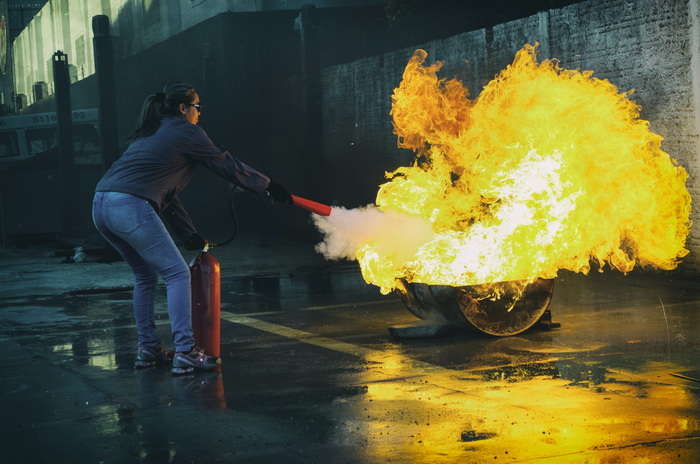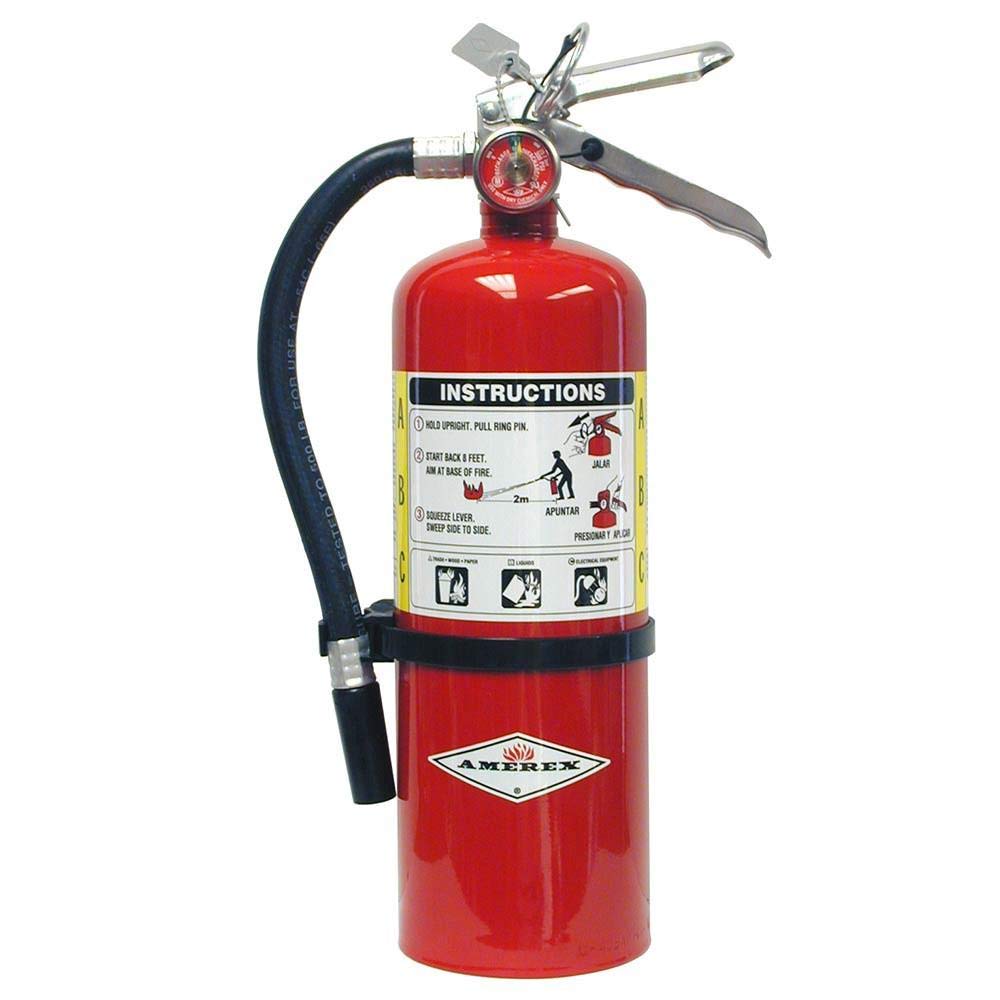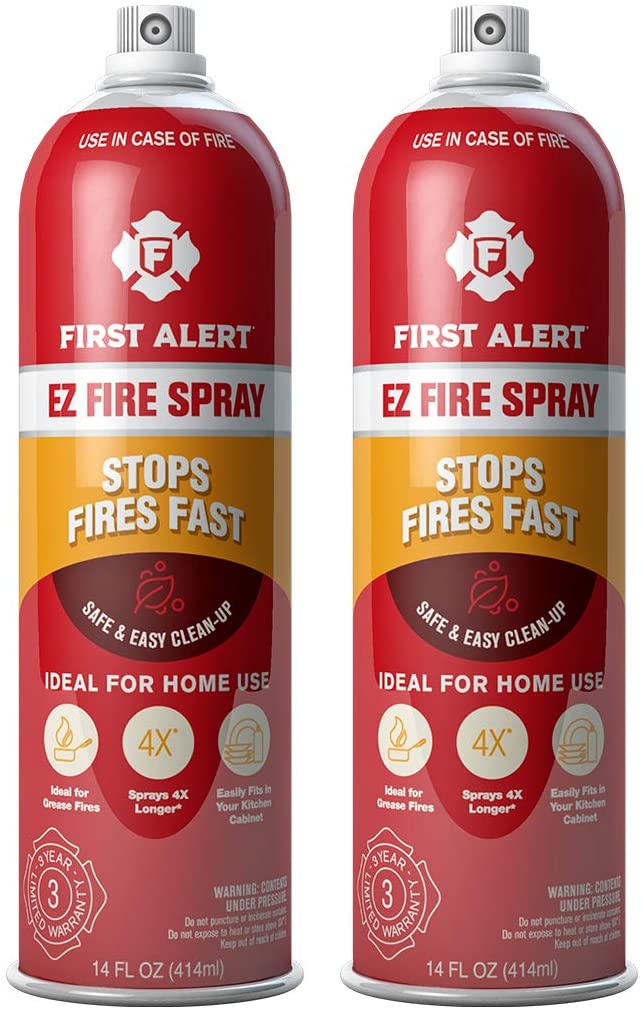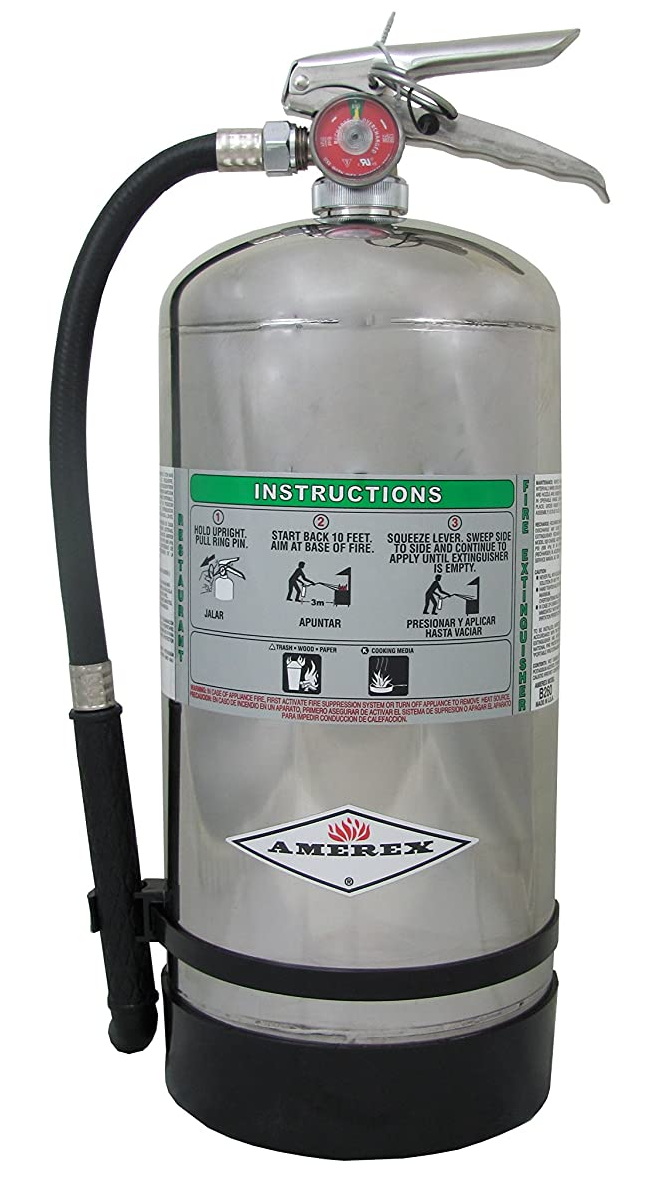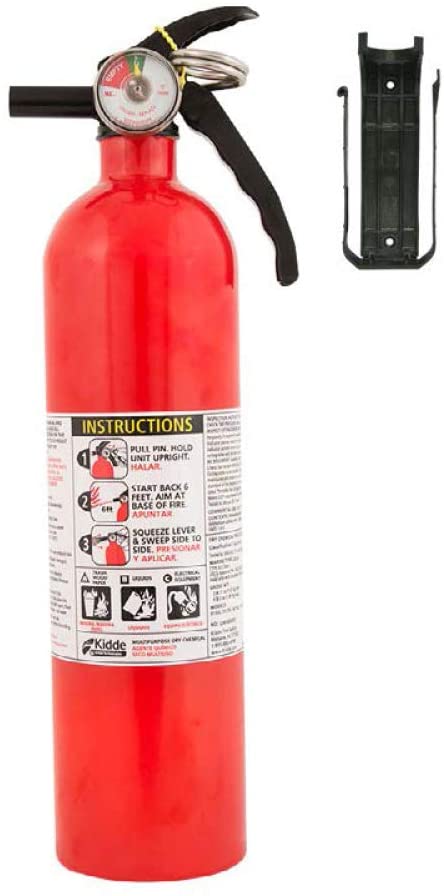Disclosure: When you buy something through links on our site, we may earn an affiliate commission.
All small fires in your home, office, garage, factory, RV, kitchen, basement, bedroom, or other area can be put out with fire extinguishers. Over 15 years as a factory engineer, I worked with fire extinguishers and know exactly which ones are the best on the market.
I’ve dealt with a wide range of fire extinguisher types and models over the past decade. In my opinion, these brands of fire extinguishers, such as Amerex, First Alert, and Kidde, are more reliable than others.
Not like before, you can now easily get the best fire extinguishers online from places like Amazon and eBay. The only thing you need to know is how to use them effectively and appropriately to put out small fires in your home or any other place. Check our buyer’s guide or more information if your are a beginner.
Best Fire Extinguishers for Home Use
In my experience and knowledge, I have selected ten models that is ideal for controlling any small emergency fires in you home.
1: Amerex B402 – Best Reliability
Amerex B402 is one of the most reliable fire extinguishers for home use. Class A, B, and C fires can be effectively fought with it, making it a popular choice for usage in homes and offices alike. Rugged construction, steel cylinders, and all-metal valves provide you peace of mind. This unit is also simple to maintain and service, making it an affordable option.
Pros
- Reliable
- Refillable
- Rugged design
- Easy to use
Cons
- Bit expensive
2: FIRST ALERT KITCHEN5 – Best Budget
The First Alert fire extinguisher is UL rated 10-B: C and is designed to put out flammable-liquid and electrical fires in the home, garage, and workshop. It contains a chemical-resistant and waterproof label with easy instructions, a metal pull pin with a safety seal to assist prevent accidental discharge and tampering, a corrosion-resistant color-coded metal gauge, and a corrosion-resistant color-coded metal gauge. It comes with an easy-to-install wall bracket.
Pros
- Rugged design
- Safe design
- Easy to use
- Rechargeable
- Corrosion resistant
- Compact & portable size
Cons
- One time use
- Small
3: First Alert EZ Fire Spray – Best Portability
One of the best solutions for putting out unexpected kitchen fires is First Alert EZ Fire Spray, formerly known as Tundrais. Because it is small and compact, you can control the kitchen fire with with one hand. This portable fire extinguisher is also nontoxic, and the extinguishing chemical leaves a dry residue that is easily cleaned up. It can be used in the kitchen, car, garage, RV, dorm, and more because it is rated for class A, B, C, and K fires. This portable fire extinguisher has a 32-second firefighting time, which is longer than most standard types.
Pros
- Portable
- Lightweight
- Affordable
- Longer firefighting time
- Can store easily
- Easy to use
Cons
- One time use
4: Amerex B260 – Best for Kitchen Fires
Although the Amerex B260 is a costly product, I can guarantee that it is an incredibly effective fire extinguisher for any size kitchen fire. It also comes with a 6-liter wet chemical to put out any Class A or Class K fires. It has a long discharge time of 53 seconds. That means you can easily put out difficult kitchen fires. This 22-pound portable fire extinguisher can also be used to put out basic Class A fires, but it should not be used to put out Class B or Class C fires like solvents, gasoline, or electrical fires.
Pros
- Long discharge time
- Design for both Class A and Class K fires
- Rugged design
- Rechargeable
- Comes with the flexible rubber hose
- Easy to use
Cons
- Expensive
- Heavy
5: Kidde FA110 – Best Multi Purpose
Kidde FA110 is a multipurpose fire extinguisher that can be used on fires that are classified as Class A (trash, wood, and paper), Class B (liquids and gases), or Class C (energized electrical equipment). The recreational unit is constructed of lightweight aluminum and features a durable nylon valve assembly as well as a pressure gauge for instantaneous status. On the front of the Kidde basic use fire extinguisher is an easy-to-pull safety pin and a visible instruction label. It also has an easy-to-read pressure gauge that indicates whether or not the fire extinguisher is charged.
Pros
- Multi-Purpose (Class A, Class B, and Class C fires)
- Affordable
- Lightweight
- Rust- and impact-resistant nylon handle
- Easy to use
- Six year warranty
Cons
- One time use
- Short discharge time
Buyer’s Guide Of Home Fire Extinguishers
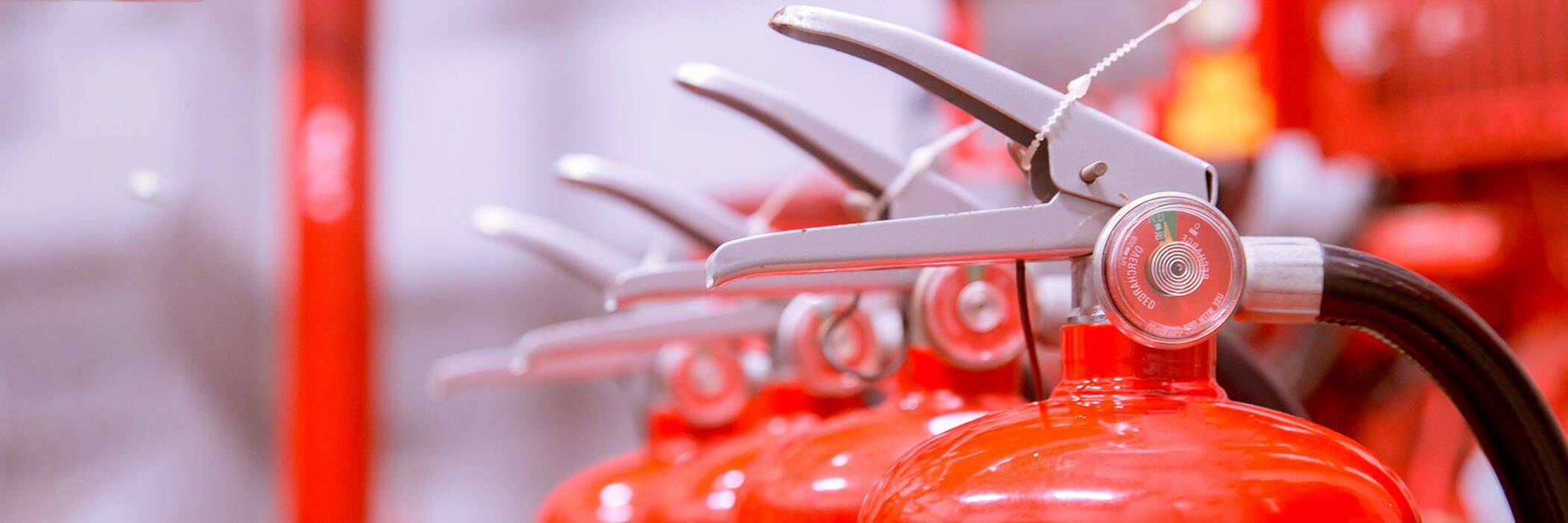
A fire extinguisher is an active firefighting equipment that is used to put out or control small fires, usually in an emergency. Extinguishers are a crucial component of any fire safety plan in any setting. They are a firefighter’s first line of defense, and they can assist avert catastrophic property damage and even death.
Therefore, if you’re concerned about fire safety in your home or workplace, the first thing you should do is buy the appropriate fire extinguisher related to the place.
The fact that keep the different fire extinguishers for different types of fires is quite essential. That means you can’t use the same fire extinguisher to put out both an electrical and a kitchen fire. Check this buyers’ guide before select the fire extinguisher for your home.
Types of Fire Extinguishers
There are five main types of fire extinguishers, each with its own name, label color, and hoses or nozzles.
1: Water extinguishers – Suitable for Class A fires
2: CO2 extinguishers – Suitable for Class B fires
3: Dry Powder extinguishers – Suitable for Class A, B and C fires
4: Foam extinguishers – Suitable for Class B and Class A fires
5: Wet chemical / water mist extinguishers – Suitable for Class K fires
Classes of Fires
There are five main types of fire classes. If you’re going to prepare for firefighting at your home or elsewhere, it’s essential to understand this classification. The class of a fire can help decide how quickly it burns, how dangerous it is, and how best to control or extinguish it. Each of the five types of flames has its own best strategy for putting it out safely and effectively.
- Class A: Ordinary solid combustibles such as paper, wood, cloth and some plastics
- Class B: Flammable liquids such as alcohol, petrol, diesel, or oils
- Class C: electrical failure from appliances, electronic equipment, and wiring
- Class D: Certain flammable metallic substances such as sodium and potassium
- Class K: Grease or oil fires specifically from cooking
Tip: When we talk about the household fires. A, B, C, and K are the most commonly use fire extinguisher types. Most domestic fires can be put out using ABC fire extinguishers, but it’s a good idea to keep a K-rated fire extinguisher on hand just in case
Sizes Of Fire Extinguishers
When selecting a fire extinguisher, the size is crucial. It is most commonly measured in pounds and reflects the amount of extinguishing agent it contains. Sizes might be as small as 2.5 pounds and as high as 350 pounds. Bigger is always better when it comes to fire extinguishers for the home.
The following are some common fire extinguisher sizes and weights:
- 2A:10B:C – 4 pounds
- 3A:40B:C – 5 pounds
- 4A:60B:C – 10 pounds
- 10A:80B:C – 20 pounds
Color Codes of Fire Extinguishers
Fire extinguishers come in five different color codes as below.
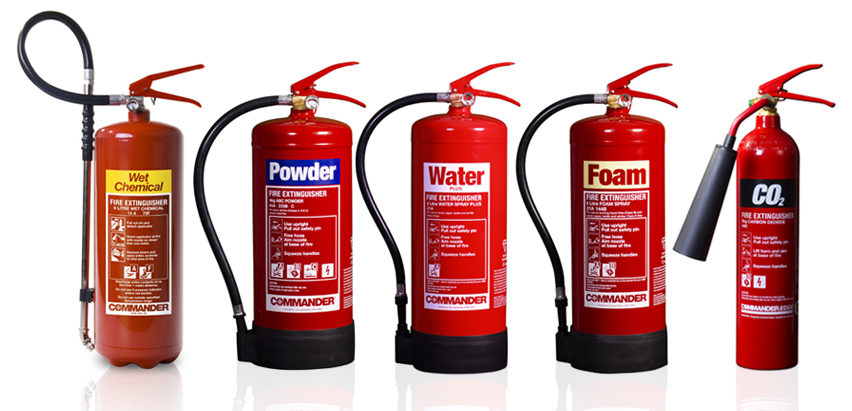
- Black – Carbon Dioxide (CO2)
- Red – Water (Spray and Mist)
- Blue – Dry Powder
- Cream – Foam
- Yellow – Wet Chemical
The main goal is to make user identification easier and faster. The type of extinguisher medium is always indicated by the identifying color. Each color indicates a distinct sort of extinguisher that can be used to put out various types of flames. The old fire extinguisher standard required the extinguisher’s entire body to be painted the appropriate color. However, modern fire extinguishers feature a red or chrome body with the identifying color displayed in a wide band over the top.
UL Rating
The Underwriters Laboratory (UL) performs safety and performance tests on all fire extinguishers. They are classified according to the size of fire they will put out and are rated according to the type of fire they will put out.
Class A and Class B:C ratings are part of the UL rating system. The number next to the letter A ranges from 1 to 40. This is the extinguisher’s water equivalence, where 1 equals 1.25 gallons of water. For instance, 2A indicates that the fire extinguisher is equivalent to 2.5 liters of water in terms of effectiveness.
The numbers before B and C indicate how many square feet the fire extinguisher can extinguish. A fire extinguisher with a rating of 40:BC, for example, can put out a fire that is larger than 40 square feet. The letter C denotes that the extinguisher can be used on electrically powered equipment.
Rechargeable Vs Non Rechargeable Fire Extinguisher
Simply, Rechargeable fire extinguishers can be used again and again. They’re supposed to be recharged after each use or when the pressure drops over time. Non-rechargeable or disposable fire extinguishers are only intended for one-time use. You must replace your non-rechargeable fire extinguisher if you use it even once.
Tip: Recharging is required to increase effectiveness during a fire, even if only a small amount of pressure has been released.
Frequently Asked Question (FAQ)
What is the most suitable size of fire extinguisher for home use?
For home use, fire extinguishers weighing less than 10 pounds are usually the best choice. The number of floors and kitchens are also related to the size and number of fire extinguishers in the home.
What is the cost of recharging the fire extinguisher?
If you buy a rechargeable fire extinguisher, it will cost you between $20 to $50 to recharge it, depending on the size.
Where can I get fire extinguishers recharged?
Your extinguisher should be recharged by a certified expert from a fire prevention company, whether as part of routine maintenance or soon after use.
What is the average life expectancy of a fire extinguisher?
Most fire extinguishers have a lifespan of 5 to 10 years. Before you buy them, make sure to verify the warranty. Individual fire extinguishers, on the other hand, have a different life expectancy depending on the type and model, as well as whether or not they are refillable.
Are there any all-purpose fire extinguishers?
There are no all-purpose fire extinguishers on the market yet, however dry chemical extinguishers are considered “universal” or “all-purpose” because they can put out A, B, and C type fires.
How often should fire extinguishers get serviced?
A certified service provider must check on fire extinguishers once a year (every 12 months) or after each use. If an extinguisher is leaking, it needs to be fixed right away.
Conclusion
The most important piece of firefighting equipment that every home should have is a fire extinguisher. In the event of a fire, it can save your property as well as the lives of your family members. If you are a beginner, I hope you obtain a decent understanding of fire extinguishers after reading this buying guide. I’ve included five of the best fire extinguishers on the market right now. Now is the time to make your decision.
